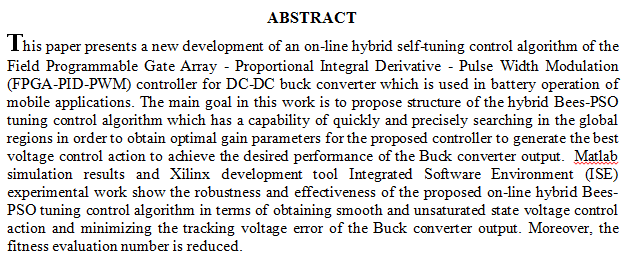
Schiff base (methyl 6-(2- (4-hydroxyphenyl) -2- (1-phenyl ethyl ideneamino) acetamido) -3, 3-dimethyl-7-oxo-4-thia-1-azabicyclo[3.2.0] heptane-2-carboxylate)Co(II), Ni(II), Cu (II), Zn (II), and Hg(II)] ions were employed to make certain complexes. Metal analysis M percent, elemental chemical analysis (C.H.N.S), and other standard physico-chemical methods were used. Magnetic susceptibility, conductometric measurements, FT-IR and UV-visible Spectra were used to identified. Theoretical treatment of the generated complexes in the gas phase was performed using the (hyperchem-8.07) program for molecular mechanics and semi-empirical computations. The (PM3) approach was used to determine the heat of formation (ΔH˚f), binding energy (ΔEb), an
... Show More (6)
(6)
 (3)
(3)
The reaction oisolated and characterized by elemental analysis (C,H,N) , 1H-NMR, mass spectra and Fourier transform (Ft-IR). The reaction of the (L-AZD) with: [VO(II), Cr(III), Mn(II), Co(II), Ni(II), Cu(II), Zn(II), Cd(II) and Hg(II)], has been investigated and was isolated as tri nuclear cluster and characterized by: Ft-IR, U. v- Visible, electrical conductivity, magnetic susceptibilities at 25 Co, atomic absorption and molar ratio. Spectroscopic evidence showed that the binding of metal ions were through azide and carbonyl moieties resulting in a six- coordinating metal ions in [Cr (III), Mn (II), Co (II) and Ni (II)]. The Vo (II), Cu (II), Zn (II), Cd (II) and Hg (II) were coordinated through azide group only forming square pyramidal
... Show MoreThe preparation and spectral characterization of complexes for Co(II), Ni(II), Cu(II), Cd(II), Zn(II) and Hg(II) ions with new organic heterocyclic azo imidazole dye as ligand 2-[(2`-cyano phenyl) azo ]-4,5-diphenyl imidazole ) (2-CyBAI) were prepared by reacting a dizonium salt solution of 2-cyano aniline with 4,5-diphenyl imidazole in alkaline ethanolic solution .These complexes were characterized spectroscopically by infrared and electronic spectra along with elemental analysis‚ molar conductance and magnetic susceptibility measurements. The data show that the ligand behaves a bidantate and coordinates to the metal ion via nitrogen atom of azo and with imidazole N3 atom. Octahedral environment is suggested for all metal complex
... Show MoreNew bidentate Schiff base ligand (L) namely [(Z)-3-(2-oxoindolin-3ylildeneamino)benzoic acid] type (NO) was prepared via condensation of isatin and 3-amino benzoic acid in ethanol as a solvent in existence of drops of (glac. CH3COOH). The new ligand (L) was characterized base on elemental microanalysis, FT-IR, UV-Vis, 1H-NMR spectra along with melting point. Ligand complexes in general formula [M(L)2Cl2]. H2O, where: MII = Co, Cu, Cd, and Hg; L= C15H10 N2O3 were synthesized and identified by FT-IR, UV-Vis, 1H-NMR (for Cd complex only) spectra, atomic absorption, chloride content along with molar conductivity and magnetic susceptibility. It was found that the ligand behaves as bidentate on complexation via (N) atom of imine group an
... Show MoreQuinolones L1 (ciprofloxacin) are manufactured wide range anti-infection agents with great oral ingestion and magnificent bioavailability. Because of the concoction capacities found on their core (a carboxylic corrosive capacity at the 3-position) and much of the time an essential piperazinyl ring (or anothertN-heterocycle) at the 7-positionh and a carbonylvoxygenc atomi atothel 4-positioni) quinolones bind metal particlesiframing buildings which can go about as bidentate. Bidentateiligands L2=2-phenyl-2-(P-methoxy anilinee) acetonitrilel was set up by the response of Primiryiaminejwithjbenzaldehyde, in nearness of potassiumbcyanidej and acidicimedia . Theimetalledifices were portrayed by the miniaturized scale component examination (C.H
... Show MoreThis study aimed to study the inhibition activity of purified bacteriocin produced from the local isolation Lactococcuslactis ssp. lactis against pathogenic bacteria species isolated from clinical samples in some hospitals Baghdad city. Screening of L. lactis ssp. Lactis and isolated from the intestines fish and raw milk was performed in well diffusion method. The results showed that L. lactis ssp. lactis (Lc4) was the most efficient isolate in producing the bacteriocin as well observed inhibitory activity the increased that companied with the concentration, the concentration of the twice filtrate was better in obtaining higher inhibition diameters compared to the one-fold concentration. The concentrate
... Show MoreThe reaction of 2-amino-benzothiazole with bis [O,O-2,3,O,O – 5,6 – (chloro(carboxylic) methiylidene) ] – L – ascorbic acid (L-AsCl2) gave new product 3-(Benzo[d]Thaizole-2-Yl) – 9-Oxo-6,7,7a,9-Tertrahydro-2H-2,10:4,7-Diepoxyfuro [3,2-f][1,5,3] Dioxazonine – 2,4 (3H) – Dicarboxylic Acid, Hydro-chloride (L-as-am)), which has been insulated and identified by (C, H, N) elemental microanalysis (Ft-IR),(U.v–vis), mass spectroscopy and H-NMR techniques. The (L-as am) ligand complexes were obtained by the reaction of (L-as-am) with [M(II) = Co,Ni,Cu, and Zn] metal ions. The synthesized complexes are characterized by Uv–Visible (Ft –IR), mass spectroscopy molar ratio, molar conductivity, and Magnetic susceptibility techniques. (
... Show MoreThe reaction of LAs-Cl8 : [ (2,2- (1-(3,4-bis(carboxylicdichloromethoxy)-5-oxo-2,5dihydrofuran-2-yl)ethane – 1,2-diyl)bis(2,2-dichloroacetic acid)]with sodium azide in ethanol with drops of distilled water has been investigated . The new product L-AZ :(3Z ,5Z,8Z)-2azido-8-[azido(3Z,5Z)-2-azido-2,6-bis(azidocarbonyl)-8,9-dihydro-2H-1,7-dioxa-3,4,5triazonine-9-yl]methyl]-9-[(1-azido-1-hydroxy)methyl]-2H-1,7-dioxa-3,4,5-triazonine – 2,6 – dicarbonylazide was isolated and characterized by elemental analysis (C.H.N) , 1H-NMR , Mass spectrum and Fourier transform infrared spectrophotometer (FT-IR) . The reaction of the L-AZ withM+n: [ ( VO(II) , Cr(III) ,Mn(II) , Co(II) , Ni(II) , Cu(II) , Zn(II) , Cd(II) and
... Show MoreAbstract: The M(II) complexes [M2(phen)2(L)(H2O)2Cl2] in (2:1:2 (M:L:phen) molar ratio, (where M(II) =Mn(II), Co(II), Cu(II), Ni(II) and Hg(II), phen = 1,10-phenanthroline; L = 2,2'-(1Z,1'Z)-(biphenyl-4,4'-diylbis(azan-1-yl-1-ylidene))bis(methan-1-yl-1- ylidene)diphenol] were synthesized. The mixed complexes have been prepared and characterized using 1H and13C NMR, UV/Visible, FTIR spectra methods and elemental microanalysis, as well as magnetic susceptibility and conductivity measurements. The metal complexes were tested in vitro against three types of pathogenic bacteria microorganisms: Staphylococcus aurous, Escherichia coli, Bacillussubtilis and Pseudomonasaeroginosa to assess their antimicrobial properties. From this study shows that a
... Show MoreThe reaction of LAs-Cl8 : [ (2,2- (1-(3,4-bis(carboxylicdichloromethoxy)-5-oxo-2,5- dihydrofuran-2-yl)ethane – 1,2-diyl)bis(2,2-dichloroacetic acid)]with sodium azide in ethanol with drops of distilled water has been investigated . The new product L-AZ :(3Z ,5Z,8Z)-2- azido-8-[azido(3Z,5Z)-2-azido-2,6-bis(azidocarbonyl)-8,9-dihydro-2H-1,7-dioxa-3,4,5- triazonine-9-yl]methyl]-9-[(1-azido-1-hydroxy)methyl]-2H-1,7-dioxa-3,4,5-triazonine – 2,6 – dicarbonylazide was isolated and characterized by elemental analysis (C.H.N) , 1H-NMR , Mass spectrum and Fourier transform infrared spectrophotometer (FT-IR) . The reaction of the L-AZ withM+n: [ ( VO(II) , Cr(III) ,Mn(II) , Co(II) , Ni(II) , Cu(II) , Zn(II) , Cd(II) and Hg(II)] has been i
... Show More